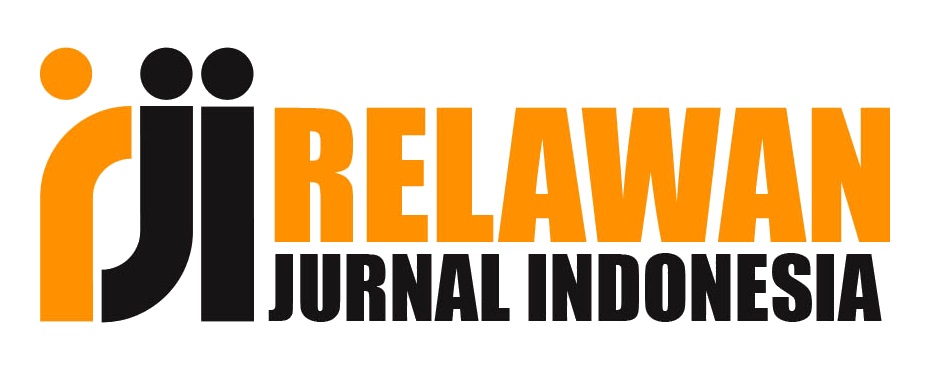The Teachers’ Effective English Listening Comprehension Strategies for Senior High School Students
DOI:
https://doi.org/10.57176/jn.v3i2.96Keywords:
English proficiency, listening skills, teaching strategiesAbstract
The purpose of this study was to find out how teachers at MA Ma'arif Jogorogo applied strategies to teach aspects of listening. The teachers were selected through purposive sampling, which involved the selection of samples based on specific criteria. Based on the purposive sampling method, two teachers were selected as research samples. A qualitative descriptive research approach was used to examine three aspects of teachers' strategies: their interpretation of teaching strategies, their actual teaching methods, and their assessment of students' listening comprehension. Data collection involved semi-structured interviews to gain in-depth insights from the respondents. Data analysis used interactive analysis models from Miles and Huberman. The research revealed that teachers' interpretations of strategies were closely interrelated with other skills, impacting learning outcomes significantly. Additionally, the use of different strategies facilitated students to more easily understand the material discussed. Furthermore, the use of different strategies could lead to varying results. Moreover, the use of audio-visual media allowed students to directly hear the sound and focus on the content in question, followed by group discussions and quizzes that encouraged direct and spontaneous student responses. Finally, teachers assessed students' work through various exercises, such as summarizing the material, identifying main ideas, making presentations, and engaging in question and answer sessions.
_________________________________________________________________________________________
Tujuan dari penelitian ini adalah untuk mengetahui bagaimana guru di MA Ma'arif Jogorogo menerapkan strategi untuk mengajar aspek mendengarkan. Para guru dipilih melalui cara purposive sampling, yaitu pemilihan sampel dengan kriteria-kriteria yang telah disebutkan. Berdasarkan metode purposive sampling tersebut didapatkan dua orang guru sebagai sampel penelitian. Pendekatan penelitian deskriptif kualitatif digunakan untuk menguji tiga aspek strategi guru: interpretasi mereka terhadap strategi pengajaran, metode pengajaran mereka yang sebenarnya, dan penilaian mereka terhadap pemahaman mendengarkan siswa. Pengumpulan data melibatkan wawancara semi-terstruktur untuk mendapatkan wawasan mendalam dari para responden. Analisis data menggunakan model analisis interaktif dari Miles and Huberman. Penelitian ini mengungkapkan bahwa interpretasi guru terhadap strategi saling terkait erat dengan keterampilan lain, berdampak pada hasil pembelajaran secara signifikan. Selain itu, penggunaan strategi yangnberbeda juga memfasilitasi para siswa agar lebih mudah dalam memahami materi yang didiskusikan. Selain itu, penggunaan strategi yang berbeda dapat menyebabkan hasil yang bervariasi. Selanjutnya, penggunaan media audio visual memungkinkan siswa untuk langsung mendengar suara dan fokus pada konten yang dimaksud, diikuti dengan diskusi kelompok dan kuis yang mendorong tanggapan siswa secara langsung dan spontan. Akhirnya, guru menilai pekerjaan siswa melalui berbagai latihan, seperti meringkas materi, mengidentifikasi ide-ide utama, melakukan presentasi, dan terlibat dalam sesi tanya jawab
References
Adnan, A. (2013). The Use of Authentic Materials in Teaching Listening at Senior High School. In International Conference on Languages and Arts (pp. 120–125).
Amir, R. M., Salija, K., & Weda, S. (2019). English listening problems faced by students at an Indonesian Senior High School. 2, 7.
Angelina, Y., Gatot, Y., & Ikhsanudin, S. Y. (2023). A Development research of listening instructional materials for business administration study program students. 1(1), 1–15.
Anggraeni, M. D., Muliati, A., & Faradiba, S. (2014). Listening strategies applied by female and male students at SMP Negeri 1 Sungguminasa. 361–368.
Aquino, M. G., & De Vera, P. V. (2018). Development of learning material for Grade 7 struggling readers. TESOL International Journal, 13(2), 23–40.
Bao, X. (2017). A Study on listening strategies instructed by teachers and strategies used by students. International Journal of English Linguistics, 7(2), 186. https://doi.org/10.5539/ijel.v7n2p186
Bass, P. F., & Maloy, J. W. (2020). How to determine if a project is human subjects research, a quality improvement project, or both. Ochsner Journal, 20(1), 56–61. https://doi.org/10.31486/toj.19.0087
Bidabadi, F., & Yamat, H. (2011). The Relationship between listening strategies used by Iranian EFL freshman university students and their listening proficiency levels. English Language Teaching, 4(1), 26. https://doi.org/10.5539/elt.v4n1p26
Borgonovi, F., Pokropek, M., & Pokropek, A. (2023). Relations between academic boredom, academic achievement, ICT use, and teacher enthusiasm among adolescents. Computers and Education, 200(April), 104807. https://doi.org/10.1016/j.compedu.2023.104807
Bozorgian, H., & Pilla, H. (2013). Enhancing foreign language learning through listening strategies delivered in L1: An experimental study. International Journal of Instruction, 6(1), 105–122.
Coskun, A. (2011). Future English teachers’ attitudes towards EIL pronunciation. Journal of English as an International Language, 6(2), 46–68.
Cox, R. M., Johnson, J. A., & Xu, J. (2014). Impact of advanced hearing aid technology on speech understanding for older listeners with mild to moderate, adult-onset, sensorineural hearing Loss. Gerontology, 60(6), 557–568. https://doi.org/10.1159/000362547
Daar, G. F. (2020). Problems of English language learning in context ( based on some studies in Manggarai).
Duy, V. H., & Quan, N. H. (2021). Vietnamese English-majored students’ use of listening strategies. European Journal of English Language Teaching, 6(6). https://doi.org/10.46827/ejel.v6i6.3955
Dwivedi, Y. K., Ismagilova, E., Hughes, D. L., Carlson, J., Filieri, R., Jacobson, J., Jain, V., Karjaluoto, H., Kefi, H., Krishen, A. S., Kumar, V., Rahman, M. M., Raman, R., Rauschnabel, P. A., Rowley, J., Salo, J., Tran, G. A., & Wang, Y. (2021). Setting the future of digital and social media marketing research: Perspectives and research propositions. International Journal of Information Management, 59(May 2020), 102168. https://doi.org/10.1016/j.ijinfomgt.2020.102168
Ellis, R. (1997). The Study of second language-acquisition (1st ed.). Oxford University Press.
Fajriah, & Gani, et al. (2019). Students’ perception toward teacher’s teaching strategies, personal competence, and school facilities. English Educational Journal (EEJ), 10(1), 16–34.
Fakhruddin, Z., & Maming, I. (2024). Analysis of English listening materials and the compatibility to curriculum. 5(1), 9–18.
Fan, J., & Wang, Y. (2022). English as a foreign language teachers’ professional success in the Chinese context: The effects of well-being and emotion regulation. Frontiers in Psychology, 13(August), 1–12. https://doi.org/10.3389/fpsyg.2022.952503
Farajnezhad, Z. (2022). Developing materials for language teaching by Brian Tomlinson. March. https://www.researchgate.net/publication/359399934
Febriani, H., Asvio, N., Rahmadoni, J., & Vivekanantharasa, R. (2022). Improving EFL learners listening skills by using audio visual aids. Linguists : Journal Of Linguistics and Language Teaching, 8(2), 216. https://doi.org/10.29300/ling.v8i2.7662
Fenyi, K., Jones-Mensah, I., Tabiri, M. O., & Owusu, E. (2021). Teaching listening skill in Senior High Schools in Ghana: Issues and direction. Journal of English Education, 7(1), 77–102.
Gana, M., Haryanto, & Salija, K. (2021). Teachers’ strategies in teaching speaking (a case study of an English teacher in SMA Negeri 1 Toraja Utara). Syntax Idea, 3(8), 1–10.
Gilakjani, A. P., & Sabouri, N. B. (2016a). Learners’ listening comprehension difficulties in English language learning: A literature review. English Language Teaching, 9(6), 123. https://doi.org/10.5539/elt.v9n6p123
Gilakjani, A. P., & Sabouri, N. B. (2016b). The significance of pronunciation in English language teaching. English Language Teaching, 5(8), 1670–1677.
Gray, J. A., & Diloreto, M. (2016). The Effects of Student Engagement , Student Satisfaction , and Perceived Learning in Online Learning Environments. 11(1).
Haleem, A., Javaid, M., Qadri, M. A., & Suman, R. (2022). Understanding the role of digital technologies in education: A review. Sustainable Operations and Computers, 3(February), 275–285. https://doi.org/10.1016/j.susoc.2022.05.004
Hardan, A. A. (2013). Language learning strategies: A general overview. Procedia - Social and Behavioral Sciences, 106, 1712–1726. https://doi.org/10.1016/j.sbspro.2013.12.194
Hardiah, M. (2019). Improving Students Listening Skill by Using Audio Visual Media. Al-Lughah: Jurnal Bahasa, 7(2), 39. https://doi.org/10.29300/lughah.v7i2.1673
Haukås, Å., Bjørke, C., & Dypedahl, M. (2018). Metacognition in language learning and teaching. In Metacognition in Language Learning and Teaching. https://doi.org/10.4324/9781351049146
Heilporn, G., Lakhal, S., & Bélisle, M. (2021). An examination of teachers’ strategies to foster student engagement in blended learning in higher education. International Journal of Educational Technology in Higher Education, 18(1). https://doi.org/10.1186/s41239-021-00260-3
Karalık, T., & Merç, A. (2019). Correlates of listening comprehension in l1 and l2: A meta-analysis. Eurasian Journal of Applied Linguistics, 5(3), 353–383. https://doi.org/10.32601/ejal.651387
Keiler, L. S. (2018). Teachers’ roles and identities in student-centered classrooms. International Journal of STEM Education, 5(1). https://doi.org/10.1186/s40594-018-0131-6
Latupono, F., & Nikijuluw, R. (2022). The importance of teaching listening strategies in English language context. MATAI: International Journal of Language Education, 3(1), 1–12. https://doi.org/10.30598/matail.v2i2.5935
Liu, J. (2010). Language Learning Strategies and Its Training Model. International Education Studies, 3(3), 100–104. https://doi.org/10.5539/ies.v3n3p100
Lukita, R., & Gushendra, R. (2021). A descriptive qualitative on teachers’ strategies in teaching listening comprehension. Indonesian Journal of Integrated English Language Teaching, 6(2), 77. https://doi.org/10.24014/ijielt.v6i2.12302
Ma, T. (2010). Communicative listening training in English—features, strategies and methods. Journal of Language Teaching and Research, 1(4), 464–472. https://doi.org/10.4304/jltr.1.4.464-472
Magfirah, R. A., Atmowardoyo, H., & Tahir, M. (2023). an analysis of senior high school students’ difficulties in listening comprehension. PERFORMANCE: Journal of English Education and Literature, 2(1), 38–47.
Mamoon-Al-Bashir, M., Kabir, M. R., & Rahman, I. (2016). The Value and Effectiveness of Feedback in Improving Students’ Learning and Professionalizing Teaching in Higher Education. Journal of Education and Practice, 7(16), 38–41. www.iiste.org
Márquez, J., Lazcano, L., Bada, C., & Arroyo-Barrigüete, J. L. (2023). Class participation and feedback as enablers of student academic performance. SAGE Open, 13(2), 1–16. https://doi.org/10.1177/21582440231177298
Maryanti, Sofyan Abdul Gani, Saiful Marhaban, D. (2021). Teachers’ strategies in teaching speaking skill to junior high school students. English Education Journal (EEJ), 12(4)(October 2021), 540–557.
Mercadal-sabbagh, T., & Purdy, M. (2016). Listening: The “lost” communication Skill (1st ed., p. 16). Governors State University Press.
Miles, M. B., & A. Huberman, M. (1994). Qualitative data analysis: An expanded sourcebook (2nd ed.). Sage.
Namaziandost, E., Neisi, L., Mahdavirad, F., & Nasri, M. (2019). The relationship between listening comprehension problems and strategy usage among advance EFL learners. Cogent Psychology, 6(1). https://doi.org/10.1080/23311908.2019.1691338
Nasmilah, N. (2023). Teachers’ talk and students’ attitude in learning English at secondary schools in Indonesia: A correlational analysis. Education Research International, 2023. https://doi.org/10.1155/2023/8959615
Nation, I. S. P., & Newton, J. (2008). Teaching ESL/EFL listening and speaking. In Teaching ESL/EFL Listening and Speaking. https://doi.org/10.4324/9780203891704
Nguyen, H., & Terry, D. R. (2017). English learning strategies among EFL learners: A narrative approach. IAFOR Journal of Language Learning, 3(1), 4–19. https://doi.org/10.22492/ijll.3.1.01
Nha, C. T., Thi, N., & Dung, H. (2020). Listening learning strategies employed by English majors at The Saigon International University. International Journal on Studies in English Language and Literature, 8(7), 16–27. https://doi.org/10.20431/2347-3134.0807003
Oje, A. V., Hunsu, N. J., & May, D. (2023). Virtual reality assisted engineering education: A multimedia learning perspective. Computers & Education: X Reality, 3(June), 100033. https://doi.org/10.1016/j.cexr.2023.100033
Oxford, R. (1990). Language learning strategies. Heinle & Heinle.
Pandya, U., & Joshi, P. (2022). Integration of Technology in English Language Teaching. International Seminar, 56–60.
Parupalli, S. R. (2019). The role of English as a global language. Research Journal Of English (RJOE), 4(1), 64–79. https://www.researchgate.net/publication/334282978%0ATHE%0Awww.rjoe.org.in
Priya, A. (2021). Case study methodology of qualitative research: Key attributes and navigating the conundrums in its application. Sociological Bulletin, 70(1), 94–110. https://doi.org/10.1177/0038022920970318
Putra, R. A. A., Riwayatiningsih, R., & Setyarini, S. (2021). Portraying teacher’s metacognitive knowledge to promote efl young learners’ critical thinking in Indonesia. International Journal of Language Education, 5(1), 552–568. https://doi.org/10.26858/IJOLE.V5I1.13043
Rana, N. (2023). A Study of ESP students’ English language learning beliefs, strategies, and academic English achievement. RESEARCH REVIEW International Journal of Multidisciplinary, 8(7), 75–90. https://doi.org/10.31305/rrijm.2023.v08.n07.011
Richards, J. C. (1985). The structure of a language lesson 6. Reflective Teaching in Second Language Classrooms, 113–137.
Richards, J. C. (2013). Approach , design , procedure listening comprehension : Teachers of English to Speakers of Other Languages, Inc. (TESOL), 17(2), 219–240.
Salam, A., & Khalek El-Koumy, A. (2009). The effect of classroom performance assessment on EFL students’ basic and inferential reading skills background of the problem. November.
Saraswaty, D. R. (2018). Learners’ difficulties & strategies in listening comprehension. English Community Journal, 2(1), 139. https://doi.org/10.32502/ecj.v2i1.1003
Shishido, H., Nagai, H., Ohtsuka, Y., Satoh, K., Iwashita, A., & Takano, T. (1993). Clinical evaluation of cefozopran in respiratory tract infections. Chemotherapy, 41, 540–542. https://doi.org/10.11250/chemotherapy1953.41.Supplement4_540
Siegel, J. (2015). Exploring listening strategy instruction through action research (1st ed.). Palgrave-MacMillan.
Sihombing, I. A., & Simanjuntak, D. C. (2023). The Use of digital audio in enhancing Efl learners’ listening proficiency. JETAL: Journal of English Teaching & Applied Linguistic, 4(2), 64–74. https://doi.org/10.36655/jetal.v4i2.1118
Smiljanic, & Bradlow. (2015). Speaking and hearing clearly: tTalker and listener factors in speaking style changes. J Neurochem, 4(1), 1–15. https://doi.org/10.1111/j.1749-818X.2008.00112.x.Speaking
Tomlinson, C. A., Brighton, C., Hertberg, H., Callahan, C. M., Moon, T. R., Brimijoin, K., Conover, L. A., & Reynolds, T. (2003). Differentiating instruction in response to student readiness, interest, and learning profile in academically diverse classrooms: A review of literature. Journal for the Education of the Gifted, 27(2–3), 119–145. https://doi.org/10.1177/016235320302700203
Umar, Hartono, R., & Wahyuni, S. (2023). Using multimedia tools and online resources to teach listening. Journal of Education Research and Evaluation, 7(3), 537–544. https://doi.org/10.23887/jere.v7i3.60683
Vahdany, F., Sabouri, N. B., & Ghafarnian, S. (2015). The relationship among EFL teachers, students’ attitudes & their teaching-learning achievements in English. Theory and Practice in Language Studies, 5(12), 2625. https://doi.org/10.17507/tpls.0512.26
Vandergrift, L. (2003). Orchestrating strategy use: Towards a model of the skilled L2 listener. Language Learning, 53(September), 461–494.
Wollman-Bonilla, J. E., Husbands, C., Pearce, J., Taylor, L. K., Bernhard, J. K., Garg, S., & Cummins, J. (2008). What makes great pedagogy ? Nine claims from research Autumn 2012 Great pedagogy : nine claims from research. Journal of Early Childhood Literacy, 8(3), 167–192. http://ecl.sagepub.com/cgi/doi/10.1177/1468798408096481%5Cnhttp://ecl.sagepub.com/cgi/content/abstract/1/2/167
Wolvin, A. D. (2012). Listening, understanding, and misunderstanding. 21st Century Communication: A Reference Handbook, 137–146. https://doi.org/10.4135/9781412964005.n16
Xu, J., Fan, J., & Luo, K. (2021). Exploring L2 listening instruction, self-efficacy, and strategy use: A mediation analysis. Frontiers in Psychology, 12(November), 1–12. https://doi.org/10.3389/fpsyg.2021.758757
Yin, Z., & Tsai, S. B. (2021). Research on Virtual Reality Interactive Teaching under the Environment of Big Data. Mathematical Problems in Engineering, 2021. https://doi.org/10.1155/2021/7980383
Yıldırım, S., & Yıldırım, Ö. (2016). The importance of listening in language learning and listening comprehension problems experienced by language l earners: a literature review. DergiPark, 16(4), 2094–2110. https://dergipark.org.tr/en/download/article-file/291967
Downloads
Published
How to Cite
Issue
Section
License
Copyright (c) 2024 Arum Putri Rahayu

This work is licensed under a Creative Commons Attribution-ShareAlike 4.0 International License.
You are free to:
- Share — copy and redistribute the material in any medium or format for any purpose, even commercially.
- Adapt — remix, transform, and build upon the material for any purpose, even commercially.
- The licensor cannot revoke these freedoms as long as you follow the license terms.
Under the following terms:
- Attribution — You must give appropriate credit , provide a link to the license, and indicate if changes were made . You may do so in any reasonable manner, but not in any way that suggests the licensor endorses you or your use.
- ShareAlike — If you remix, transform, or build upon the material, you must distribute your contributions under the same license as the original.
- No additional restrictions — You may not apply legal terms or technological measures that legally restrict others from doing anything the license permits.
Notices:
You do not have to comply with the license for elements of the material in the public domain or where your use is permitted by an applicable exception or limitation .
No warranties are given. The license may not give you all of the permissions necessary for your intended use. For example, other rights such as publicity, privacy, or moral rights may limit how you use the material.
















